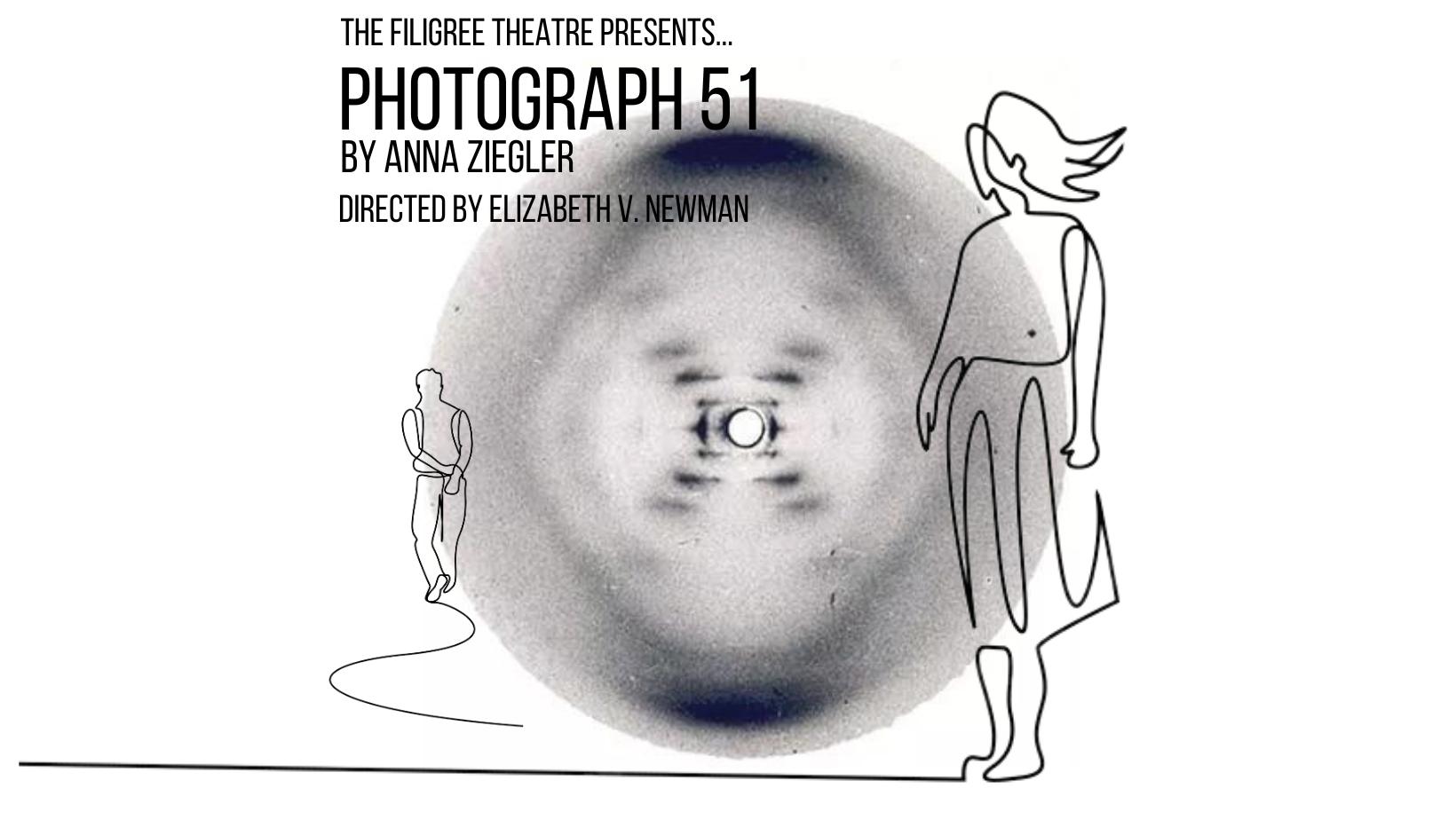Review: PHOTOGRAPH 51 by Anna Ziegler, by Filigree Theatre, Austin
by David Glen Robinson
Anna Ziegler’s play Photograph 51 could exhaust a reviewer’s list of cliché superlatives. And such hacking would show disrespect to an impressive work of art premiering in Austin. Photograph 51 relates the scientific story of the discovery of the role of DNA in the genetics of life. Science-based plays have exceptional challenges explaining scientific principles and activities to non-scientific audiences. The writer must exercise great care in order not to lose the average theatregoer. Anna Ziegler’s strong dialogues accomplish this task with ease thanks to her superb writing skills. Director Elizabeth V. Newman of Fililgree Theatre took full advantage of Ziegler’s play, which has just finished its short run at Factory on Fifth in east Austin.
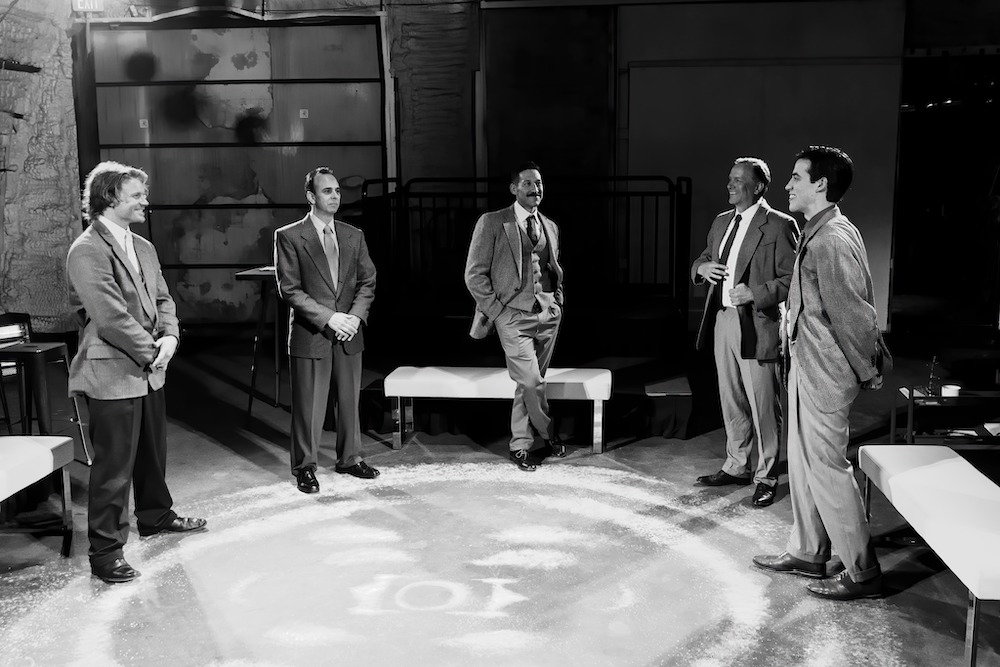
 Ziegler's work is a case study of generational change in the conduct of scientific inquiry. The researchers racing to unlock the secret of DNA were in the United Kingdom. All were English, except for James Watson (played by Cameron La Brie), who came from the United States to join the fray. In 1951, King’s College London was in the lead, largely run by Maurice Wilkins (J. Kevin Smith). Young Rosalind Franklin (Laura Ray) went to King’s to apply her skills in x-ray photography. She mistakenly thought she would be leading a team, but Wilkins informed her that he'd hired her as a technican, not a theorist. This established conflict at the very outset.
Ziegler's work is a case study of generational change in the conduct of scientific inquiry. The researchers racing to unlock the secret of DNA were in the United Kingdom. All were English, except for James Watson (played by Cameron La Brie), who came from the United States to join the fray. In 1951, King’s College London was in the lead, largely run by Maurice Wilkins (J. Kevin Smith). Young Rosalind Franklin (Laura Ray) went to King’s to apply her skills in x-ray photography. She mistakenly thought she would be leading a team, but Wilkins informed her that he'd hired her as a technican, not a theorist. This established conflict at the very outset.
The lab attracted others, notably Ray Gosling, Ph.D. ( Fernando Rivera) who'd learned x-ray techniques as Rosalind Franklin’s assistant. Don Caspar (Bailey Ellis) showed up to contribute enthusiastically after he completed his doctorate. Watson had joined a team at Cambridge University with Francis Crick (Scot Friedman).
The early 1950s brought the near eclipse of Victorian science, its frightening crowning achievement the splitting of the atom. The role of DNA, about to be described by these teams, was only a distant second. All calculations were made by hand (it is to scream; how far we’ve come since then!). Yet that was the milieu of the characters, who looked to the future with hope, almost bravura, confident that great things awaited their discovery, along with rewards for the finders. Ego came into play, particularly for Watson. Wilkins cared more for the group, shared consciousness, and due recognition for same. Rosalind Franklin, lead character in the drama, is shown to be denied individual recognition due to the researchers' misogyny.
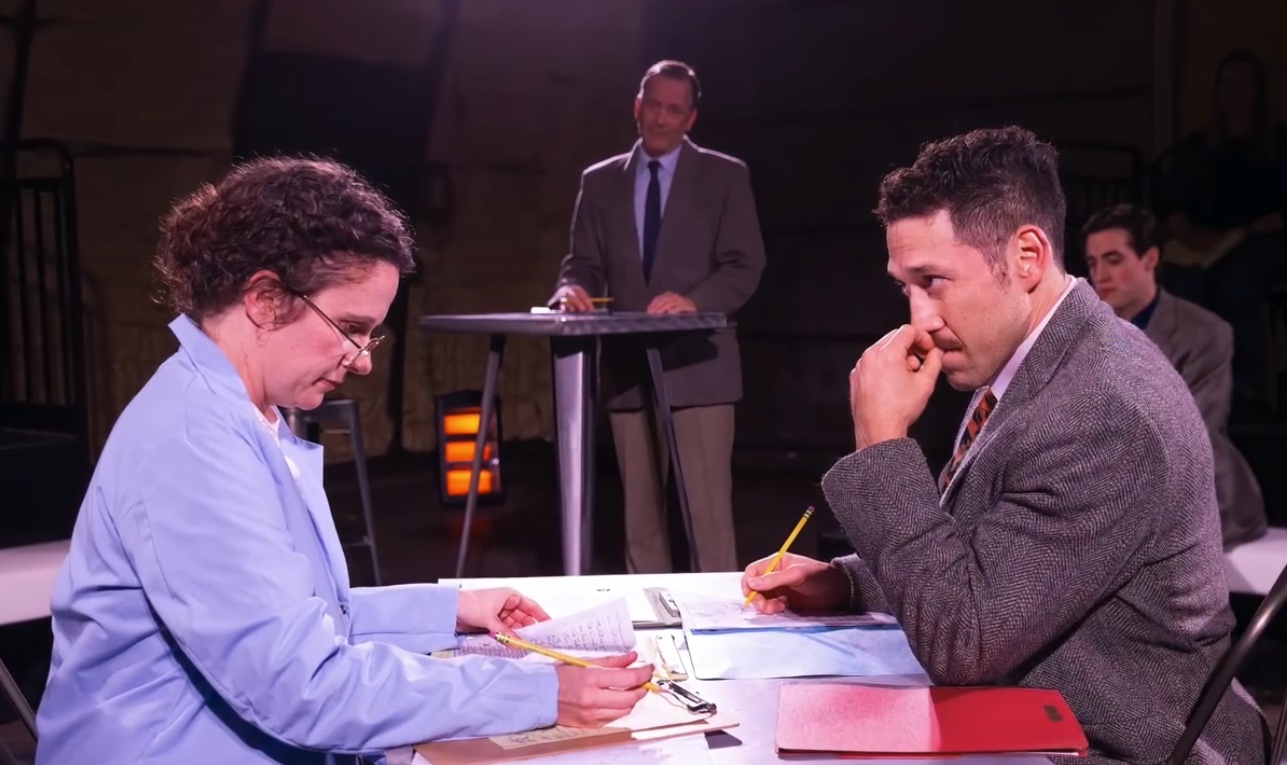
Playwright Ziegler, presumably a post-feminist, is surprisingly fair in exploring this theme. She describes personality traits of her protagonist that may have been persistently off-putting. After Wilkins’ repeated extension of olive branches to Franklin, she utters the play’s line, “I don’t want to be your friend.” She says that in front of other characters and returns to her hand calculations. The incident typifies her somewhat frosty professional behavior, which never changed. This exchange hints why the men could have been reluctant to rush out on a limb to secure rights, privileges, and recognition for Franklin. Wilkins and the other characters also remained true to themselves. Additional background on the work, roles, and conflicts of the teams as known historically may be found here. Ziegler’s play is not about transformation or redemption among the characters.
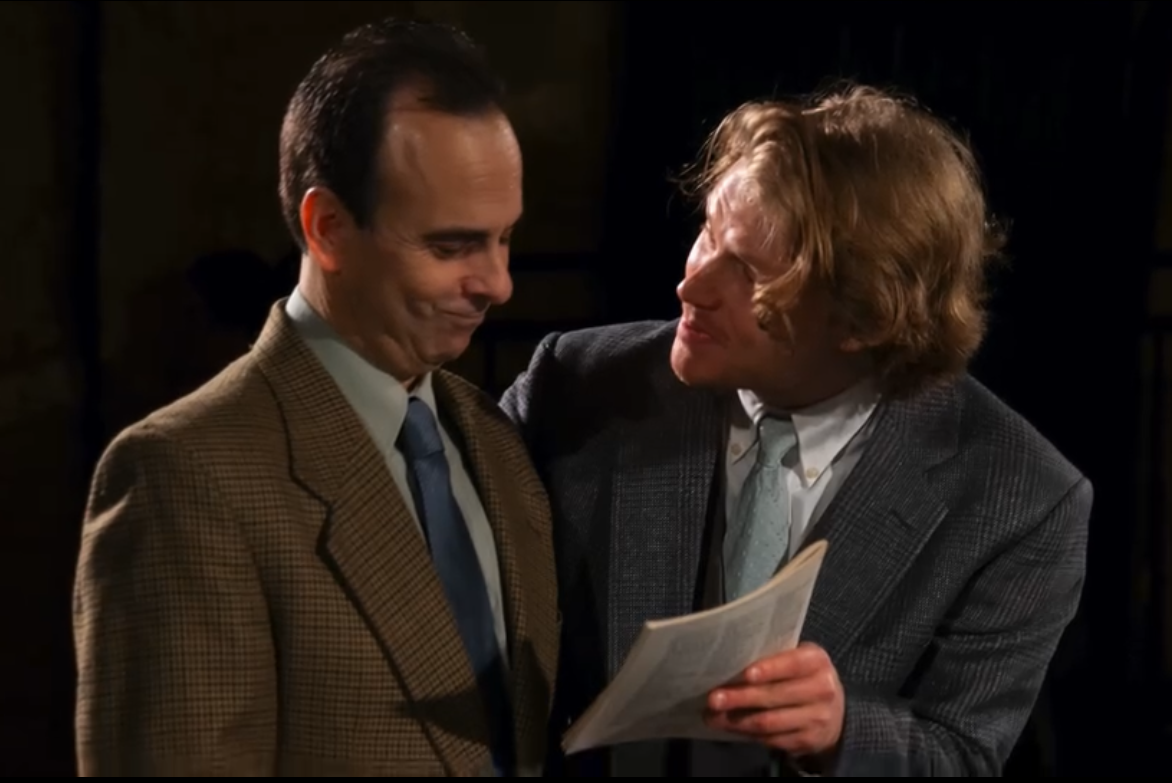 An interesting subtheme appeared in ambush reflections. Several characters mused on the roads not taken. They spoke of waking from dreams and not knowing where they were. Their disorientation segued into ruminations on life turning out differently and where they might be if they'd made one different choice. We might call this English dream distortion, a psychic symptom of a heavily stratified society where roles are rigid, narrow, and stove-piped, where creativity is tamped down. And here Pink Floyd’s lyric “Quiet desperation is the English way” is apt.
An interesting subtheme appeared in ambush reflections. Several characters mused on the roads not taken. They spoke of waking from dreams and not knowing where they were. Their disorientation segued into ruminations on life turning out differently and where they might be if they'd made one different choice. We might call this English dream distortion, a psychic symptom of a heavily stratified society where roles are rigid, narrow, and stove-piped, where creativity is tamped down. And here Pink Floyd’s lyric “Quiet desperation is the English way” is apt.
The excellent cast played this subtheme superbly. Remember that these are U.S. actors before a U.S. audience. When the American character Watson declares, "This is a free country!" he's referring to Britain. The Texas audience guffaws at that point, and the cast adroitly holds for the uproar. The next line of dialogue is “No, it isn’t,” also referring to Britain. Reprise the guffaw, louder. The director and expert cast wrung two separate big laughs out of one ironic gag about stratified Britain.
All this took place on a small stage built for in-the-round presentation with four small risers for the audience arranged at the cardinal points of the playing space. The theatre house was built in symmetry with the image on the titular photograph, and indeed, the floor pattern was a lightly brushed or dabbed painting of the central features of that photograph. Lilly Percifield, fresh from the Vortex’s Dragonfly Princess, is credited as the scenic artist. Overall scenic and lighting design credits go to Alison Lewis. On the night this reviewer attended, the twenty seats in the house held sixteen attendees. Alas, Austin! Marvelous discoveries in theatre await you.
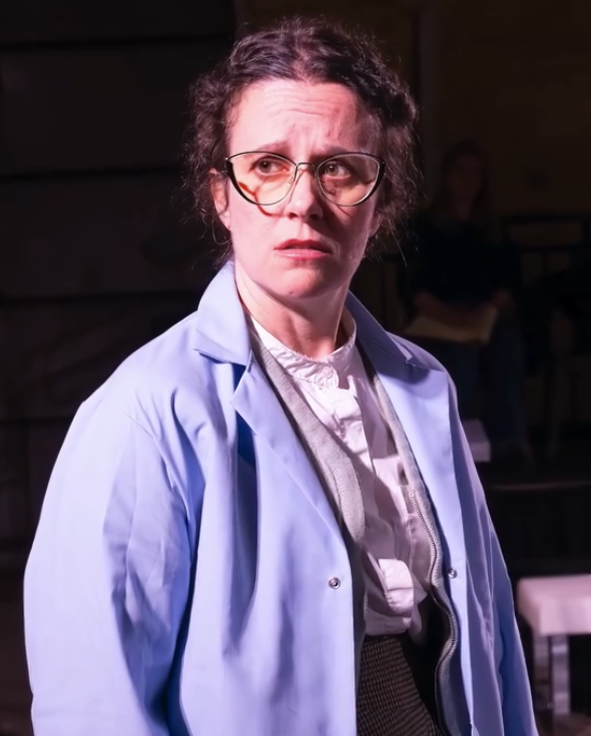 The structure of Anna Ziegler’s play is one of the best examples of the postmodern type. It is one fulsome act, telling its story in an unending rush (come prepared, no intermission) but retains a few elements of traditional act/story sequence, notably a climax. Rosalind Franklin, on her only date ever in a restaurant, steps out in her dream-mind when she refuses to answer a question by her date Don Caspar. She goes into a fugue reverie, an evocation of her family, her father’s grain of spirituality, why she must always be right, the snows of Norway, waking up having made the wrong turn in life, roads not taken, an epiphany gone wrong, a reverse-time clairvoyant retelling of her life—all in a brilliant monologue delivered by Laura Ray—and Rosalind collapses in the restaurant. Across the split scene, Watson and Crick are about to reveal the accurate, confirmed DNA model to Wilkins. The dramatic tension could not be higher. They had worked on it with data from Rosalind Franklin’s photograph #51 for at least a month before “remembering” to ask Wilkins's permission. No dummy, Wilkins realizes immediately Watson and Crick have co-opted privileged research and is devastated at the sight of the model revealling the secret of life.
The structure of Anna Ziegler’s play is one of the best examples of the postmodern type. It is one fulsome act, telling its story in an unending rush (come prepared, no intermission) but retains a few elements of traditional act/story sequence, notably a climax. Rosalind Franklin, on her only date ever in a restaurant, steps out in her dream-mind when she refuses to answer a question by her date Don Caspar. She goes into a fugue reverie, an evocation of her family, her father’s grain of spirituality, why she must always be right, the snows of Norway, waking up having made the wrong turn in life, roads not taken, an epiphany gone wrong, a reverse-time clairvoyant retelling of her life—all in a brilliant monologue delivered by Laura Ray—and Rosalind collapses in the restaurant. Across the split scene, Watson and Crick are about to reveal the accurate, confirmed DNA model to Wilkins. The dramatic tension could not be higher. They had worked on it with data from Rosalind Franklin’s photograph #51 for at least a month before “remembering” to ask Wilkins's permission. No dummy, Wilkins realizes immediately Watson and Crick have co-opted privileged research and is devastated at the sight of the model revealling the secret of life.
The rest is denouement and out-of-time reimagining of part of the story. Wilkins shared with Watson and Crick the Nobel Prize for their discovery of the structure and role of DNA in the genetics of life. Ironically for Wilkins, his belief and policy of open inquiry, sharing, and non-competition led both to his loss of critical data by questionable unethical means to a team (Watson and Crick) that certainly was competitive, but also to Wilkins’ recognition by the Nobel committee. Rosalind Franklin’s name is not to be found in the Nobel Prize announcement or the accompanying material. Granted, her work, all that she expressly cared about, is credited with the teams that supported all the awardees. Her essential work, coming up with the photograph that would unlock the secret, was not specifically cited. Further, in the play she stared and stared at the photograph but could not make the visionary leap to the structure implied by the pattern revealed, despite a lifetime of studying how things connect visually. It remains undeniable that the team of Watson and Crick intuited the double helix from Franklin’s Photograph 51—both in the play and in life
Photograph 51’s theatre has gone dark by the time you read this, but Filigree Theatre remains active in Austin. The company deserves following. Their next production is Above the Fold by Julie Zaffarano, playing April 18-28, 2024 at Factory on Fifth.
Photograph 51
by Anna Ziegler
Filigree Theatre
January 26 - February 04, 2024
January 25 - February 4, 2024
Factory on 5th
Ticket $25 - $40, available HERE
